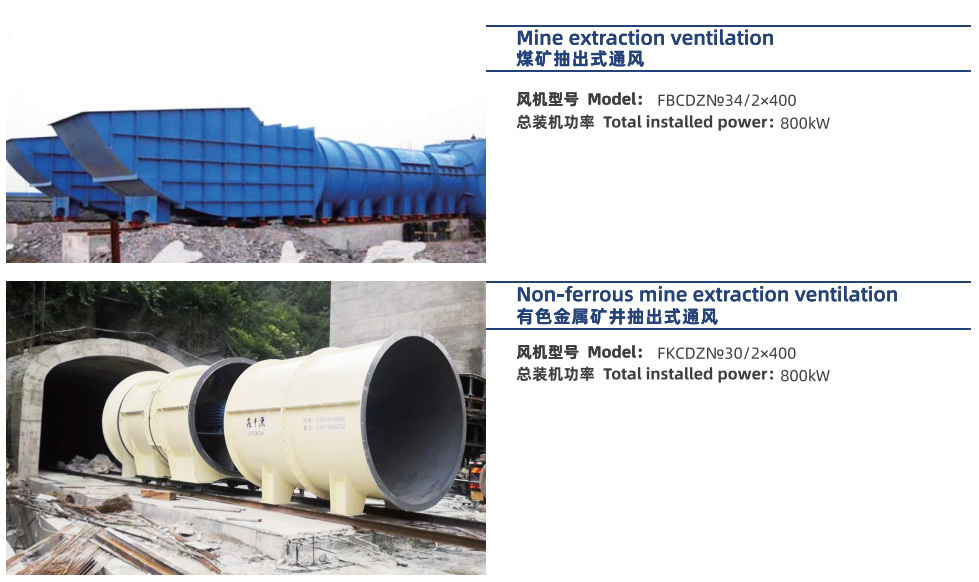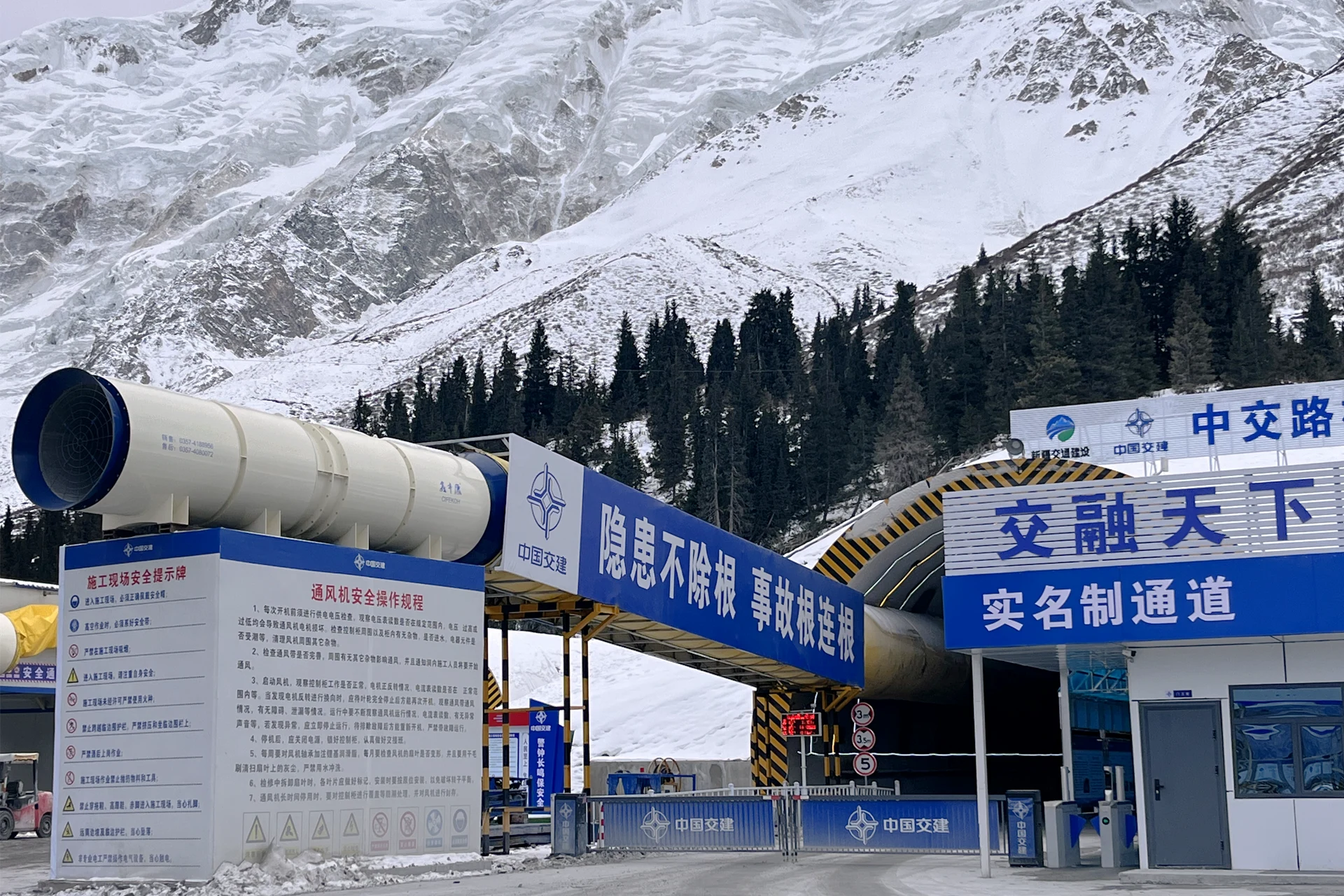mining
Mine Fan Construction Case

Mine Fan Installation and Precautions
1. The ventilators are equipped with support feet and suspension holes, which can be installed on the ground in the tunnel or hung for use.
2. Before use, the radial clearance between the impeller and the casing should be strictly checked, requiring uniform clearance around, which should be 1.5‰ to 3.5‰ of the nominal diameter of the impeller, and the minimum clearance should not be less than 1mm. The rotation should be smooth without any jamming.
3. The rotation direction of the fan impeller must comply with the direction indicated by the arrow on the casing.
4. The fan must be operated and managed by designated personnel.
5. The installation and use of the fan must comply with the relevant provisions of the "Coal Mine Safety Regulations."
6. Fans that have been transported over long distances or left unused for a long time must measure the insulation resistance of the motor stator (the cold insulation resistance of the ventilator's matching motor stator winding should not be less than 50MΩ); after passing the inspection, the power can be turned on, and a trial run of 30 minutes should be conducted. If there are no abnormal sounds, it can be put into normal operation.
7. When using the ventilator underground in a coal mine, a U-shaped non-flammable rubber cable must be used.
8. The maximum diameter duct allowed by the tunnel cross-section should be used as much as possible, and each section should be as long and straight as possible. The duct wall should not be wrinkled, and the direction should change gently at bends to reduce the resistance of the duct and increase the air delivery distance. The diameter of the duct used should generally not be less than the outlet diameter of the fan.
Ventilator Fault Analysis and Troubleshooting
| Fault Characteristics |
Fault Causes |
Fault Identification and Troubleshooting Methods |
| Motor does not turn |
1. No power supply |
1. Check the power supply |
| 2. Improper handling of the fan causing the blades to jam |
2. Repair the duct |
|
| Ventilator airflow is small |
Power supply is reversed |
Check motor wiring |
| Airflow reduction |
1. Reduced speed |
1. Check the power supply voltage |
| 2. Inlet blockage |
2. Clear the inlet |
|
| 3. Duct leakage |
3. Repair or replace the duct |
|
| Air pressure reduction |
1. Gas density is too high |
1. Observe and adjust the conveying gas |
| 2. Impeller deformation or damage |
2. Replace the damaged impeller |
|
| Vibration |
1. Foundation is not stable, subsided or deformed |
1. Repair and reinforce the foundation |
| 2. Main shaft is bent or deformed |
2. Replace the main shaft |
|
| 3. Rotor imbalance |
3. Balance the rotor or replace it |
|
| 4. Pipeline vibration |
4. Reinforce the pipeline or adjust the piping |
|
| Bearing temperature is high |
1. Bearing damage |
1. Replace the bearing |
| 2. Incorrect selection of lubricating grease |
2. Re-select and replace with suitable oil |
|
| 3. Rotor vibration |
3. Balance the rotor |
|
| Noise is loud |
1. Fan impeller wear |
1. Replace the fan impeller |
| 2. Inlet damage |
2. Repair the inlet |
|
| Motor insulation value is low |
1. Coil is damp |
1. Dry the coil |
| 2. Insulation is damaged or aged |
2. Replace the coil |
Ventilator Operating Procedures
1. Check for foreign objects inside the fan before starting. If there are foreign objects, they must be cleaned up in time.
2. Check if the voltage is normal.
3. Press the start button to turn on the machine, listen to whether the fan sound is normal, and check for any abnormal sounds. If there are abnormal sounds, stop the machine immediately for inspection.
4. On-site electricians should regularly check whether all electrical components are normal, and check for looseness in all terminals, wire ends, and connection screws.
5. Add lubricating oil on time, every 500 hours of operation, add 50-60 grams for each bearing (some fans do not have oil holes and are sealed bearings, which do not require grease; maintenance-free bearings have a lifespan of over 20,000 hours);
Note:
(1) New fans have been filled with grease, do not add grease again, wait until the running time to add;
(2) Grease type: Molybdenum disulfide or No. 3 lithium grease.




